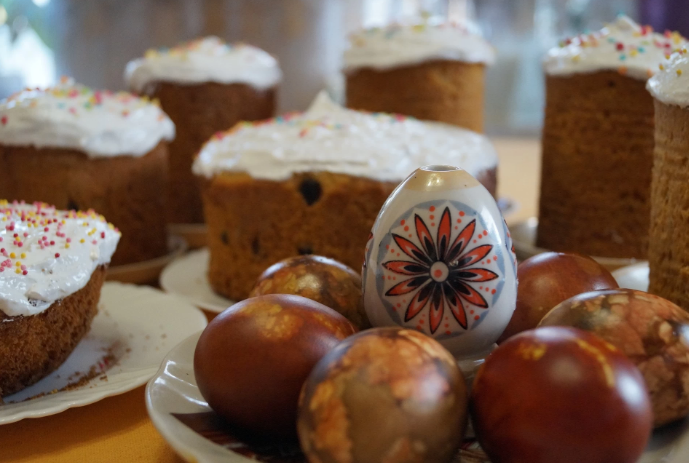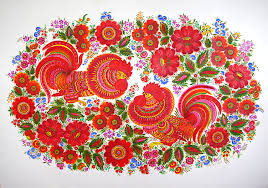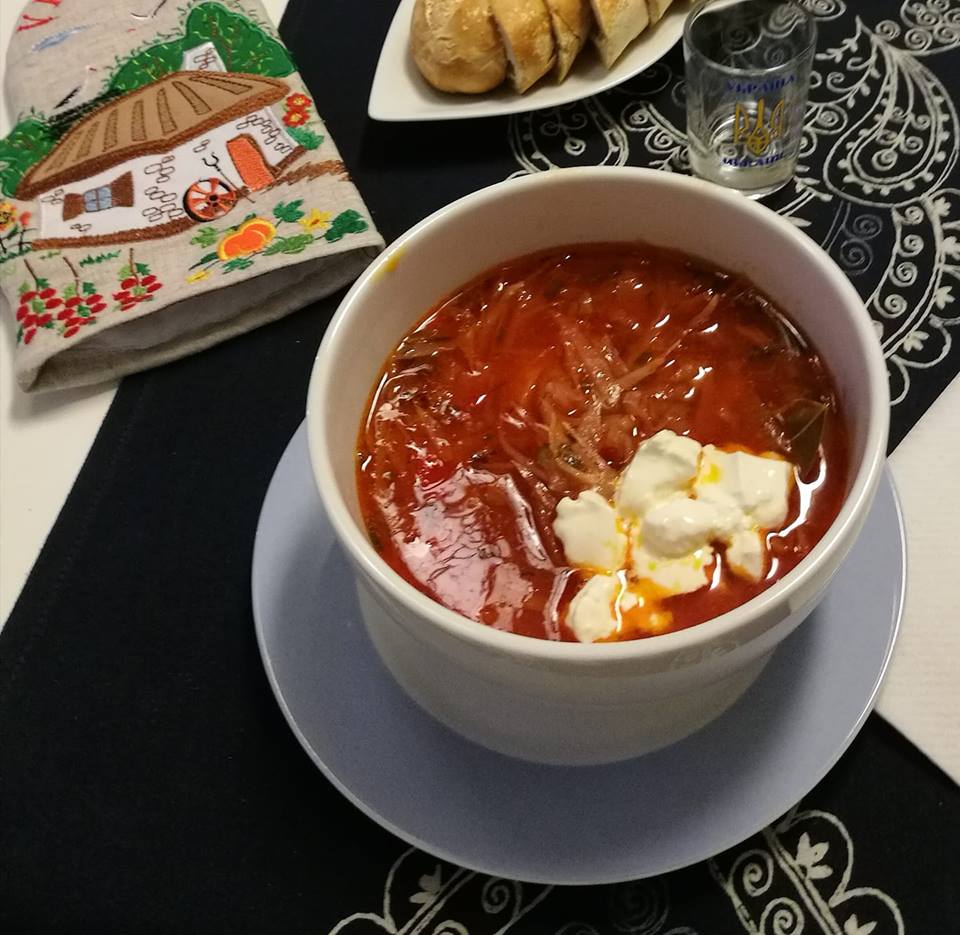Culture of Ukraine
Culinary traditions in Ukraine are connected with ancient rituals.

Kyivan Rus

Statues of Kyi, Shchek and Khoryv the three legendary brothers along with their sister Lybid.
Culinary traditions in Ukraine are connected with ancient rituals. The calendar cycle of religious holidays combined with folk traditions requires a variety of specific foods. Christmas Eve supper consists of 12 meatless dishes, including borshch , cabbage rolls, varenyky (known in North America as pierogi), fish, mushrooms, various vegetables, and a wheat grain, honey, poppyseed, and raisin dish called kutya . The latter dish is served only at Christmas time. On Easter Sunday food that has been blessed previously is eaten after Resurrection services. It includes a sweet bread called paska , colored eggs, butter, meat, sausages, bacon, horseradish, and garlic. On the holiday of the Transfiguration (19 August), apples and honey are blessed and eaten along with other fruits of the season. Various alcoholic drinks complement the meals. It is customary to offer a drink to guests, who must not refuse it except for health or religious reasons.



Ukrainian folk music
Ukrainian folk music is highly idiosyncratic despite sharing significant formal elements with the music of neighboring cultures. Typical genres in Ukrainian folk music are solo singing; part singing groups and dance music by troisty muzyky, an ensemble of fiddle, wind, and percussion including a hammered dulcimer.
Traditional dances— kozachok, hopak, metelytsia, kolomyika, hutsulka, and arkan —differ by rhythmic figures, choreography, region, and sometimes by gender, but share a duple meter. Traditional folk instruments include the bandura, a variety of flutes, various fiddles and basses, drums and rattles, the bagpipe, the hurdy-gurdy, the Jew's harp, and the hammered dulcimer.
